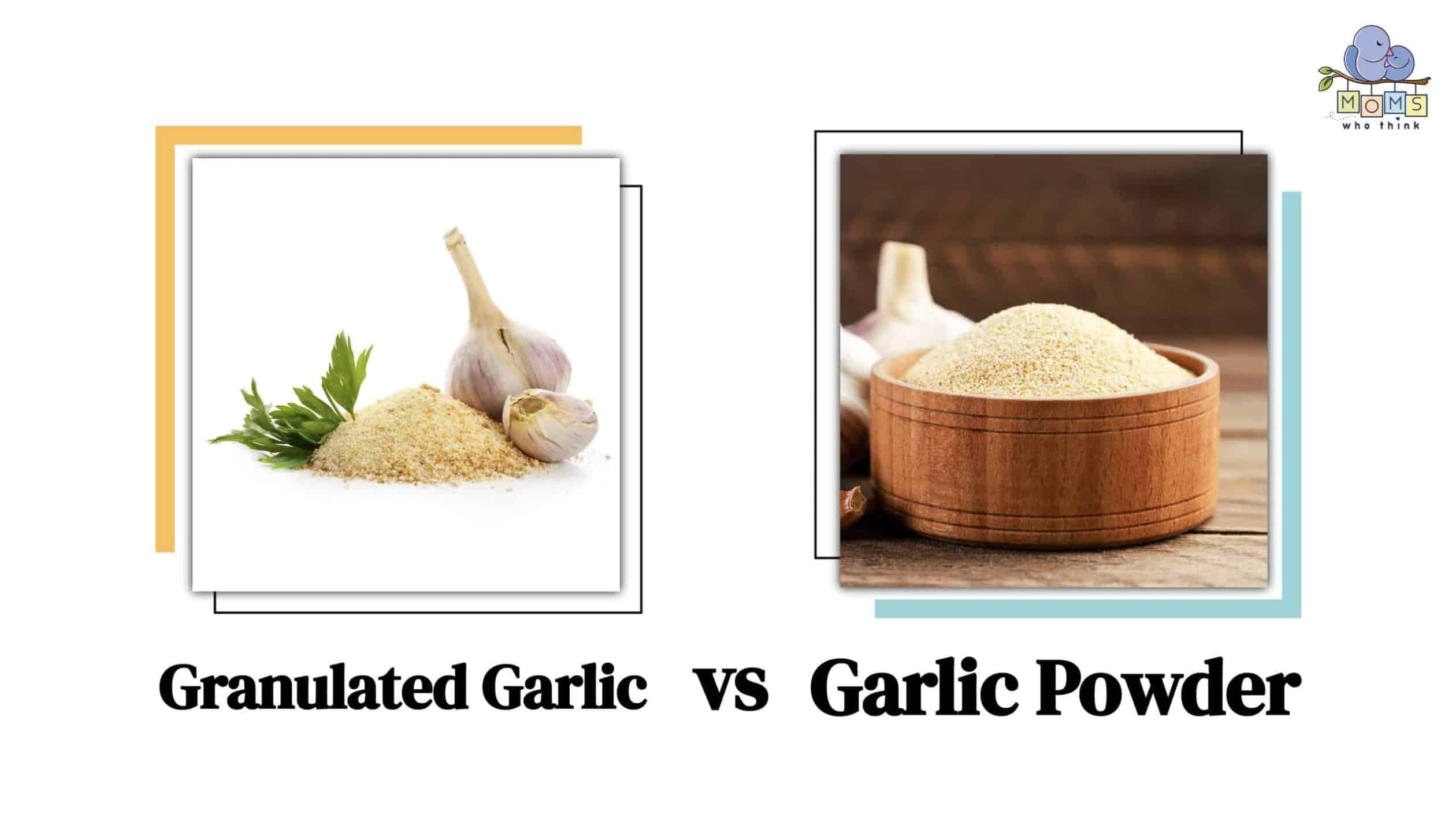In a perfect world, everyone would love to be able to have a fresh supply of garlic on hand to cook with. They’d also love to have the time to peel and mince or thinly slice each clove. But unfortunately, we home cooks often have little time to spare and sparse fresh ingredients, to boot. Your dish’s flavor shouldn’t have to suffer.
That’s where dried garlic comes in.
But when it comes to granulated garlic vs. garlic powder, which should you use? They're not quite the same thing and depending on what you want to make, you may want to make your choice carefully. Read on for a profile of each and recommendations for what will work best with your dish.
Granulated Garlic vs. Garlic Powder: What Are They?
Both granulated garlic and garlic powder are made from dehydrated garlic. To dehydrate garlic, you will usually peel and mince your cloves, then put them in a dehydrating machine if you have it, or just your oven if you don’t.
If you're making granulated garlic or garlic powder yourself, you probably know the difference between the cloves and the bulb. But just in case, the bulb – or head – of garlic is what you buy at the grocery store, and the cloves are the little segments inside that you have to peel to get to the garlic flesh inside.
Once they’re completely dry, you can move on to grinding them up. Here is where the differences come in.
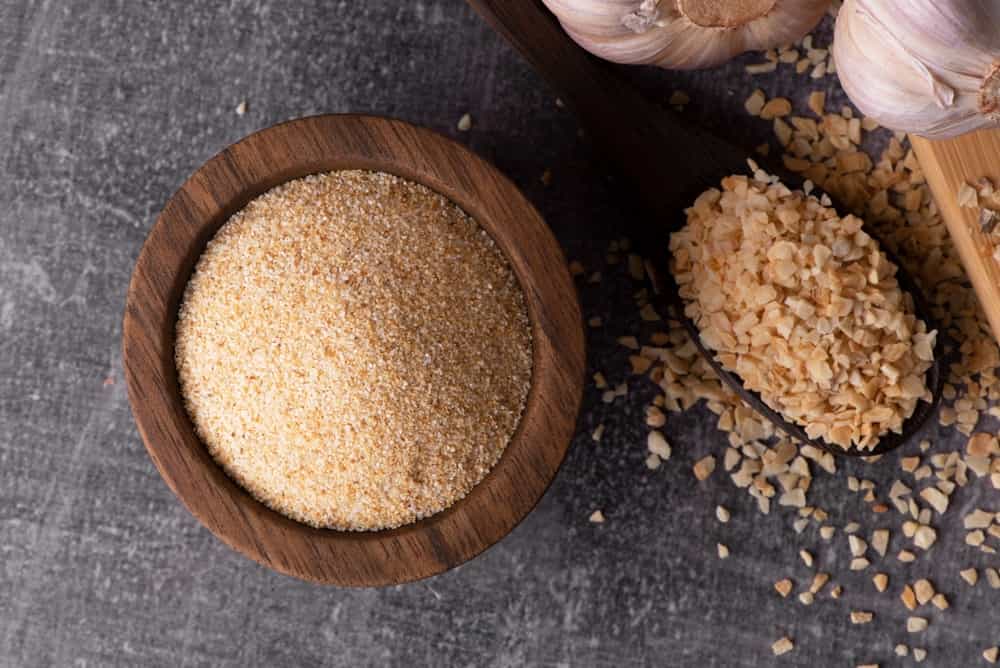
©Annmell_sun/Shutterstock.com
Granulated Garlic vs. Garlic Powder: 2 Key Differences
You have to spend much less time grinding up your dehydrated garlic if you’re aiming for granulated garlic. It has the consistency of sugar crystals, whereas garlic powder is just that – a powder. Dehydrated garlic is ground down very finely to produce the desired consistency of garlic powder.
Since garlic powder is ground so much more fine than granulated garlic, it has a much more potent and concentrated garlic scent and taste. You'll often see garlic powder in Italian restaurants that serve pizza. People like to sprinkle some garlic powder on their pizza to add a little extra flavor, although because garlic powder is so potent, you should have a light touch with the garlic powder shaker.
If you’re looking to add a garlic flavor to your dish without adding texture, garlic powder is the best bet. But garlic powder can also clump together easily, so be sure to sift and mix well.
Granulated garlic adds an oomph to your dish in the form of texture and crunch. If you’re making something that requires a spice rub, granulated garlic is often the preferred spice.
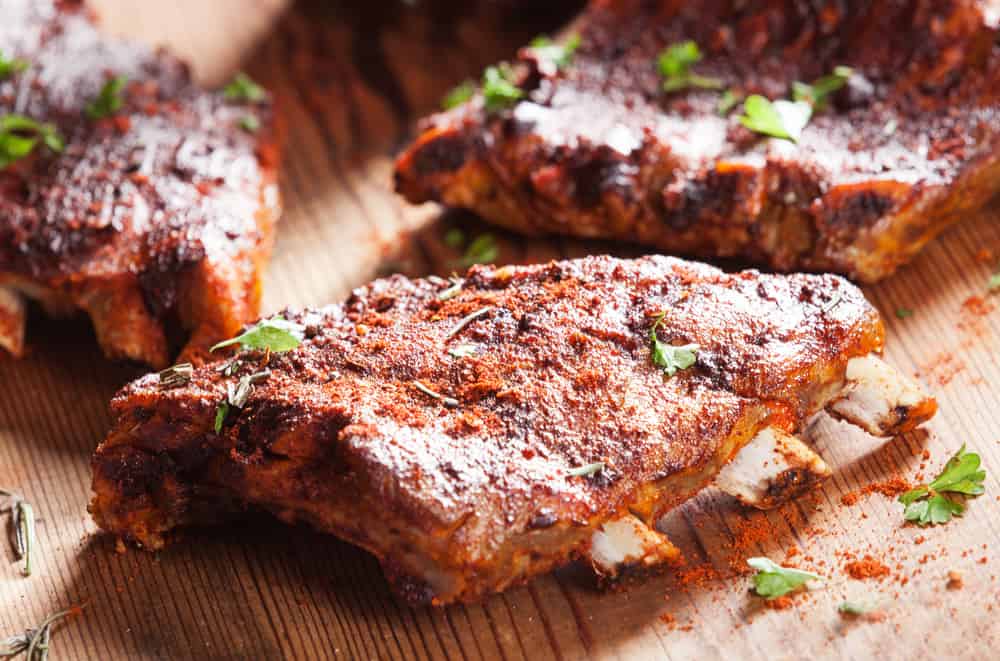
©stockcreations/Shutterstock.com
Granulated Garlic vs. Garlic Powder: Can You Substitute Them?
They’re both garlic, so when it comes down to it, you can definitely substitute granulated garlic for garlic powder and vice versa. But be sure to adjust your measurements if you’re switching one out for the other. If a recipe calls for a certain amount of garlic powder, and you’re substituting that with granulated garlic, you will likely have to add more granulated garlic to taste. Because granulated garlic has bigger granules than garlic powder, one teaspoon of it will have more air and less garlic than the same amount of garlic powder.
You can always grind up your granulated garlic to make your own fine garlic powder.
Granulated Garlic vs. Garlic Powder: Which One Should You Use?
The big question: You have both granulated garlic and garlic powder on hand, so which one should you use?
If you’re making something like pasta sauce or soup, granulated garlic is the best bet because it adds some texture and you don’t have to worry about it clumping. Same thing if you’re making a spice rub.
If you’re pressed for time though, or you’re making something like meatballs, meatloaf, or another dish where you want to pack in the garlic flavor without adding noticeable texture, garlic powder is the better option.
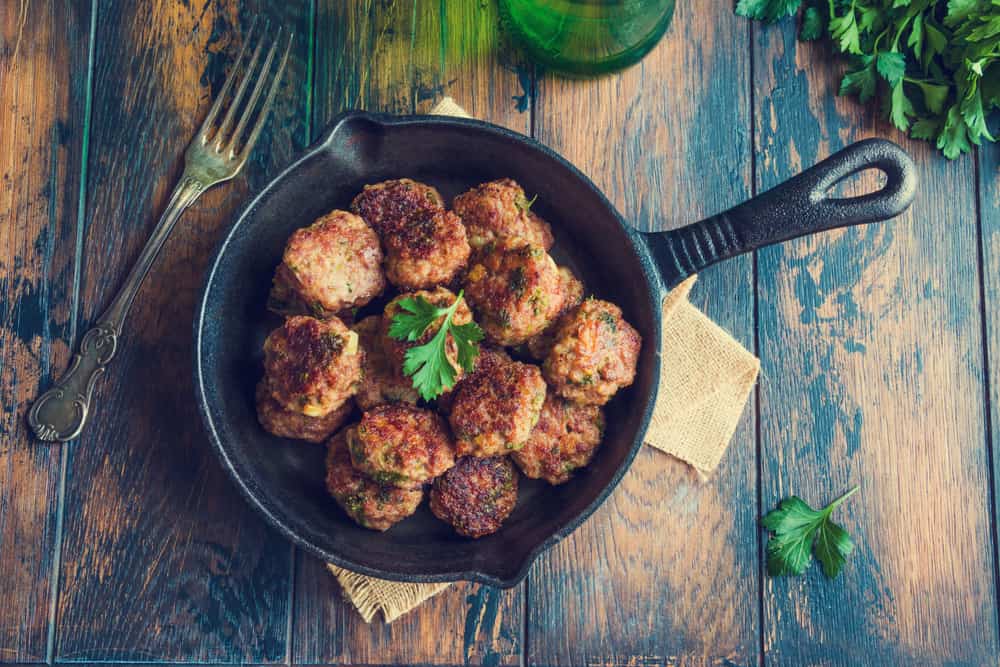
©Magrig/Shutterstock.com
Final Thoughts
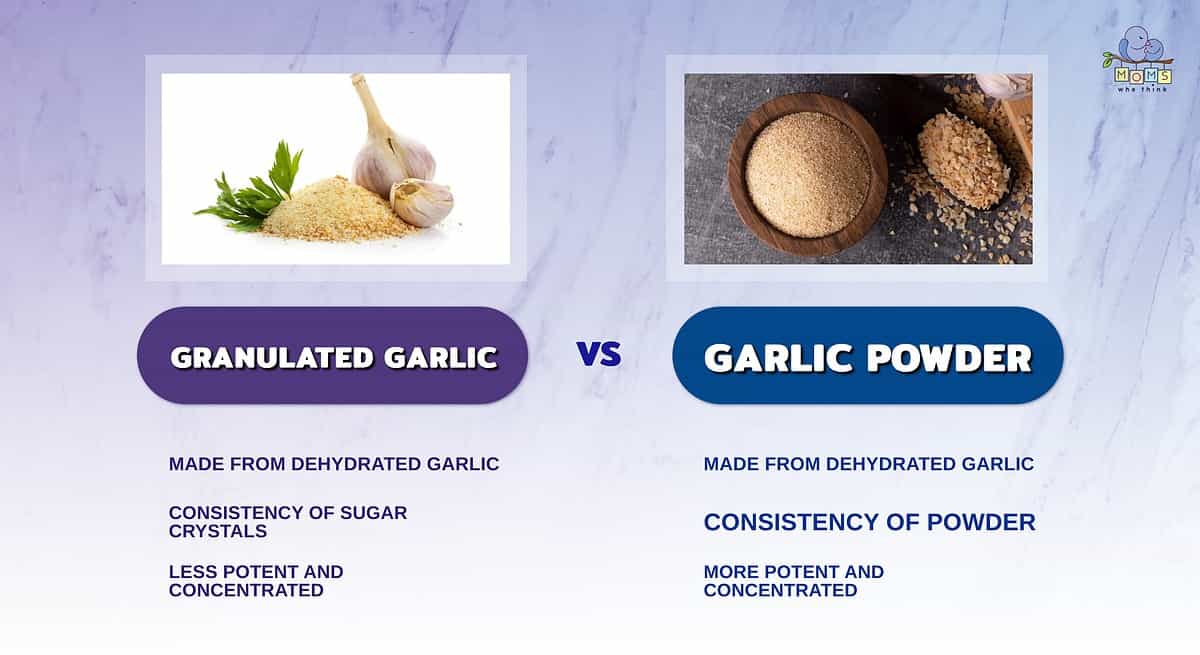
Both granulated garlic and garlic powder are great to cook with. Which one you choose to use in a recipe will depend on what you're making. Garlic powder is the way to go if you want to add garlic flavor to your recipe without the texture that comes with granulated garlic. If you're making a rub, granulated garlic will give you the crunch and texture you're looking for. Both are made from dehydrated garlic. You can make your own or buy them from the store. Having either on hand will ensure you have what you need for any recipe.
Recipe Ideas
Try your hand at using granulated garlic or garlic powder in one of these dishes!
Chicken or Tuna with Garlic Cheese Biscuits
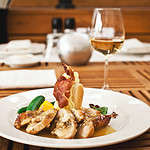
Chicken with Garlic Sauce
- Yield: 4 servings 1x
Ingredients
- 3 Tablespoons all-purpose flour, divided
- 1 1/2 teaspoons minced fresh rosemary or 4 teaspoons dried rosemary, crushed
- 1 1/2 teaspoons rubbed sage
- 3/4 teaspoon salt
- 1/2 teaspoon pepper
- 4 boneless skinless chicken breast halves (1 1/2 pounds)
- 2 Tablespoons olive oil, divided
- 7 garlic cloves, halved lengthwise
- 1/2 cup chopped onion
- 1/4 teaspoon crushed red pepper flakes
- 1/4 cup white wine or reduced sodium chicken broth
- 1 1/4 cups reduced sodium chicken broth
- 1 Tablespoon butter, melted
- 3 Tablespoons minced fresh parsley
Instructions
- In a large resealable plastic bag, combine 2 Tablespoons flour, rosemary, sage, salt and pepper; add chicken.
- Seal bag and shake to coat.
- In a large nonstick frying pan, brown chicken in 1 Tablespoon oil over medium heat for 4 minutes on each side.
- Transfer to an 8 inch square baking dish coated with cooking spray.
- Bake, uncovered, at 325°F for 15 minutes.
- While the chicken is baking, sauté the garlic, onion and red pepper flakes in remaining oil until onion is tender and garlic begins to brown, about 3 minutes.
- Stir in wine or broth; bring to a boil. Boil until wine is reduced by half, about 3 minutes.
- Stir in chicken broth; bring to a boil. Boil until broth is reduced by half, about 7 minutes. Remove pan from the heat.
- Whisk together butter and remaining flour; add to frying pan. Return to heat.
- Bring to a boil; cook and stir for 2 to 3 minutes or until sauce thickens.
- Serve sauce warm over chicken breasts. Sprinkle with parsley.
Nutrition
- Serving Size: 1 chicken breast half with ½ cup sauce
- Calories: 339
- Sodium: 774mg
- Fat: 12g
- Saturated Fat: 4g
- Carbohydrates: 12g
- Fiber: 1g
- Protein: 42g
- Cholesterol: 106 mg
